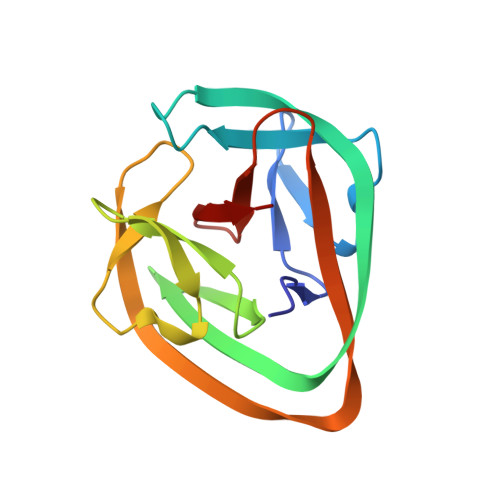Structural basis for protein trans-splicing by a bacterial intein-like domain - protein ligation without nucleophilic side chains.
Aranko, A.S., Oeemig, J.S., Iwai, H.(2013) FEBS J 280: 3256-3269
- PubMed: 23621571
- DOI: https://doi.org/10.1111/febs.12307
- Primary Citation of Related Structures:
2LWY - PubMed Abstract:
Protein splicing in trans by split inteins has become a useful tool for protein engineering in vivo and in vitro. Inteins require Cys, Ser or Thr at the first residue of the C-terminal flanking sequence because a thiol or hydroxyl group in the side chains is a nucleophile indispensable for the trans-esterification step during protein splicing. Newly-identified distinct sequences with homology to the hedgehog/intein superfamily, called bacterial intein-like (BIL) domains, often do not have Cys, Ser, or Thr as the obligatory nucleophilic residue found in inteins. We demonstrated that BIL domains from Clostridium thermocellum (Cth) are proficient at protein splicing without any sequence changes. We determined the first solution NMR structure of a BIL domain, CthBIL4, to guide engineering of split BIL domains for protein ligation. The newly-engineered split BIL domain could catalyze protein ligation by trans-splicing. Protein ligation without any nucleophilic residues of Cys, Ser and Thr could alleviate junction sequence requirements for protein trans-splicing imposed by split inteins and could broaden applications of protein ligation by protein trans-splicing. The resonance assignments and structure coordinates have been deposited in BMRB (18653) and RCSB (2LWY).
Organizational Affiliation:
Research Program in Structural Biology and Biophysics, Institute of Biotechnology, University of Helsinki, Helsinki, Finland.














